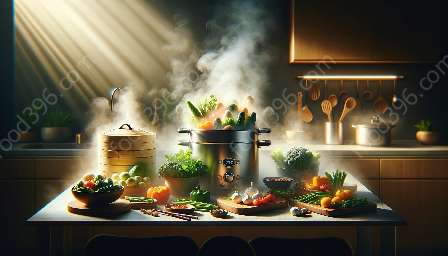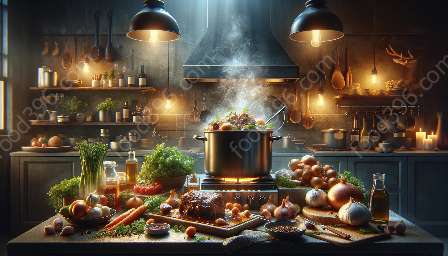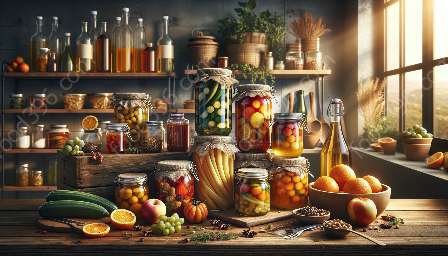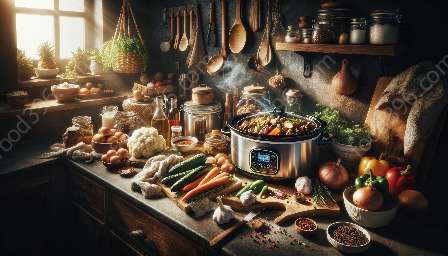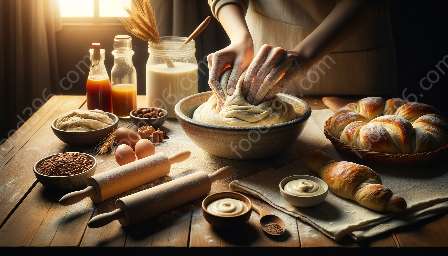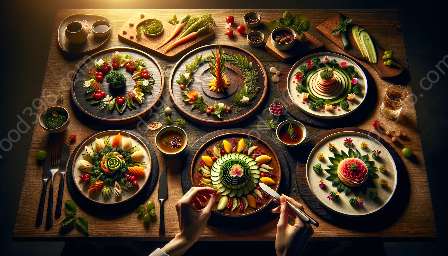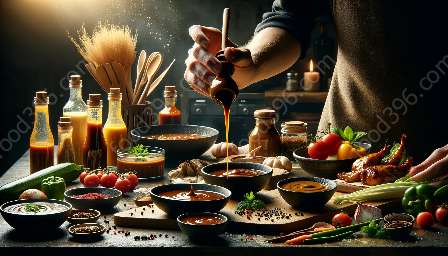Food garnishing techniques play a crucial role in enhancing the visual appeal of dishes and making them more appetizing. Whether you're a professional chef or a home cook, the art of food garnishing can elevate your culinary creations to new heights. In this comprehensive guide, we'll explore a variety of creative and attractive food presentation methods that are sure to impress your guests and elevate your dining experience.
The Importance of Food Garnishing
Food garnishing goes beyond just making a dish look pretty - it can greatly impact the overall dining experience. When you take the time to garnish your dishes thoughtfully, you not only enhance their visual appeal but also demonstrate your attention to detail and culinary skills. A well-garnished dish can make a lasting impression and elevate the perceived value of your culinary creations.
Types of Food Garnishes
There are countless food garnishing techniques that can be used to add visual interest and creativity to your dishes. Some popular food garnishes include:
- Herb Sprigs and Leaves: Fresh herbs such as parsley, basil, and cilantro can be used to add a pop of color and a touch of freshness to any dish. They can be finely chopped, torn, or used as whole sprigs to garnish soups, salads, or main courses.
- Citrus Zest: The colorful and aromatic zest of citrus fruits, such as lemons, limes, and oranges, can be used to add a burst of flavor and visual appeal to a wide range of dishes, from desserts to seafood.
- Edible Flowers: Delicate and vibrant edible flowers, such as pansies, nasturtiums, and violets, can be used to adorn salads, desserts, and cocktails, adding a touch of elegance and sophistication.
- Fruit and Vegetable Carvings: Intricately carved fruits and vegetables, such as watermelons, carrots, and radishes, can be transformed into stunning decorative elements that are sure to impress diners at special events and celebrations.
- Sauces and Drizzles: A well-executed sauce or drizzle can not only enhance the flavor of a dish but also serve as a decorative element. From chocolate and caramel drizzles to vibrant coulis and reductions, sauces can be used to add artistic flair to desserts and savory dishes alike.
Techniques for Food Garnishing
Now that we've covered some popular types of food garnishes, let's delve into the techniques that can help you execute these garnishing methods with precision and creativity.
Knife Skills
Developing strong knife skills is essential for creating intricate garnishes such as vegetable carvings and fruit sculptures. Practice precision cutting, slicing, and dicing to create visually stunning garnishes that showcase your attention to detail.
Plating Techniques
Consider the principles of balance, color, and texture when plating your dishes. Use different plating techniques such as stacking, layering, and arranging components strategically to create visually appealing and harmonious presentations.
Garnish Placement
Strategically placing garnishes on the plate can make all the difference. Consider the visual flow of the dish and use garnishes to lead the diner's eye around the plate, creating an engaging and aesthetically pleasing dining experience.
Creative Tools and Molds
Utilize a variety of creative tools and molds, such as vegetable peelers, piping bags, and cookie cutters, to create unique shapes and designs for your garnishes. Experiment with different techniques to add creativity and flair to your dishes.
Integration with Food Preparation Techniques
Food garnishing techniques are closely intertwined with food preparation techniques. While food preparation focuses on the culinary skills required to cook and assemble dishes, food garnishing takes those prepared dishes to the next level by adding visual appeal and creativity. By integrating food garnishing techniques with food preparation techniques, chefs and home cooks can elevate their dishes and create memorable dining experiences.
Harmony of Flavors and Presentation
When integrating food garnishing techniques with food preparation, it's important to ensure that the garnishes complement the flavors and overall presentation of the dish. Consider how the visual elements of the garnish can harmonize with the flavors and textures of the prepared components, creating a cohesive and delightful culinary experience.
Timing and Coordination
Coordinate the timing of your garnishing efforts with your food preparation process to ensure that the garnishes are fresh and vibrant when the dish is served. Timing is key to achieving visually stunning presentations, as wilted or discolored garnishes can detract from the overall impact of the dish.
Food Garnishing and Food & Drink Pairing
Pairing food garnishing techniques with the art of food and drink is an essential aspect of creating a holistic dining experience. The visual appeal of a garnished dish can greatly influence the perception and enjoyment of food and drink pairings, making the dining experience more memorable and satisfying.
Complementary Visual Elements
Consider how the visual elements of your garnished dishes can complement and enhance the visual presentation of accompanying beverages. Whether it's a beautifully garnished dessert paired with a perfectly crafted cocktail or a visually striking appetizer served alongside a carefully curated wine, the marriage of food garnishing and drink presentation can create a truly harmonious dining experience.
Enhancing the Overall Aesthetic
By incorporating thoughtful garnishing techniques, you can elevate the overall aesthetic of your food and drink pairings. Whether you're aiming for a casual and inviting atmosphere or an elegant and sophisticated affair, the visual impact of well-garnished dishes can contribute to a more visually appealing and memorable dining experience.
Conclusion
Food garnishing techniques are a powerful way to enhance the visual appeal of dishes and elevate the dining experience. By exploring various types of food garnishes, mastering garnishing techniques, integrating them with food preparation methods, and pairing them with the art of food and drink, you can take your culinary skills to new heights and create unforgettable dining experiences.





